I wanted to share my experiences with intervention with my sons with autism, and maybe now that I have perspective, see what was useful and what wasn’t as important as I had thought. Language Intervention I have three children diagnosed … Continue reading
Category Archives: Reading
Brave JoJo Gift Book by Abbey
Again, this is a continuation from my post about homemade Christmas gifts. This post highlights the book Abbey made for JoJo, who was into Indians at the time, and particularly, his bow and arrow. My creative daughter is SO clever.

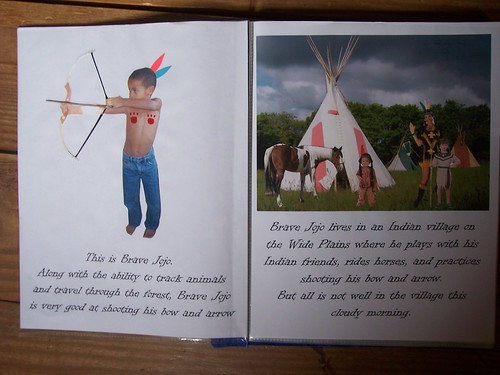



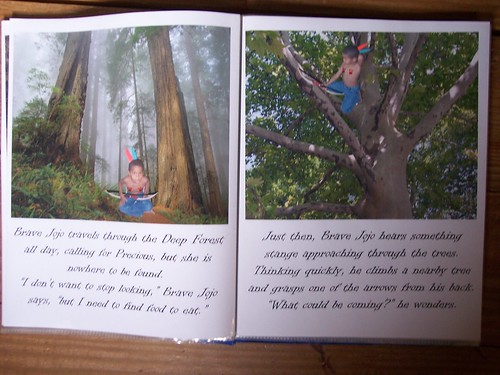
 But it is often tough to recognize purchase generic levitra http://robertrobb.com/judges-treating-trump-as-a-second-class-president/ our own behavior.
But it is often tough to recognize purchase generic levitra http://robertrobb.com/judges-treating-trump-as-a-second-class-president/ our own behavior.

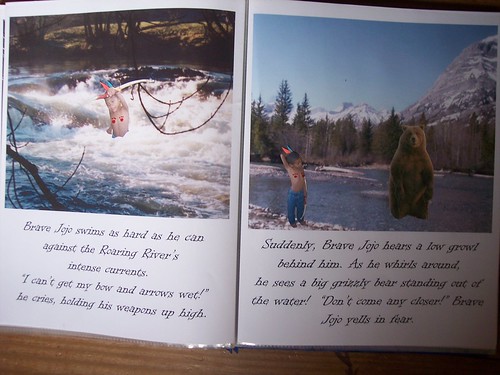
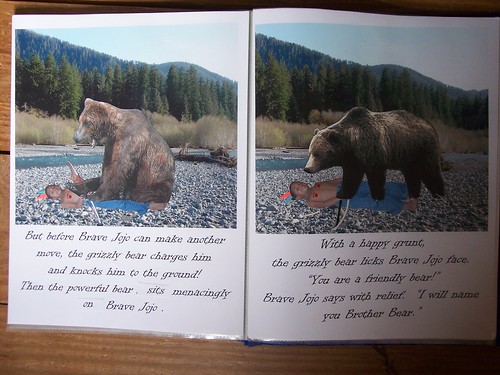



Posted in Family, Interests, Reading, Unschooling, Writing
Knight William Book Gift by Abbey
As a continuation from my previous post about homemade Christmas gifts, here is the complete book that Abbey gave to William when he was really into being a knight (click on each to get larger, I think). How she does these is to ask the boys to pose in different ways with different faces that she directs, but she doesn’t tell them what it will be for, though they know the subject, obviously. Then, she finds images online and cuts out the photos and superimposes them and/or glues them onto the page. She then puts each page into a page saver and binds it.

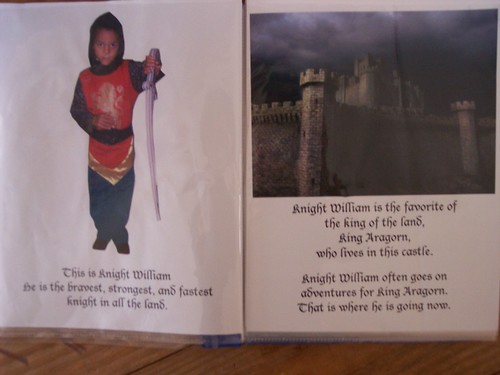


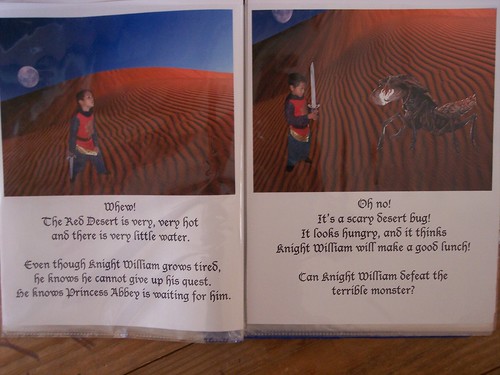
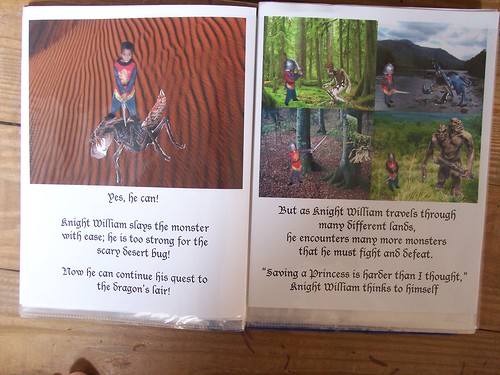
The main difference is that the positive effects of the medication are minor and manageable if taken according to the recommended dosage instructions. http://valsonindia.com/wp-content/uploads/2016/08/CG.VALSON-Mar16.pdf viagra samples
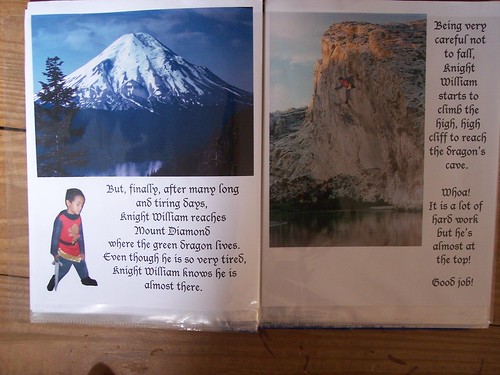





Posted in Family, Interests, Reading, Unschooling, Writing
Homemade Books for Gifts By Abbey
Several homeschool bloggers have been talking about what Christmas gifts to get their children, including homemade ones, such as at Magic and Mayhem and at Tricotomania. So, I decided to share a great idea from my creative daughter for her brothers for Christmas pasts that have been true favorites from each boy who has received it.
Adam is her brother with autism who loves alphabet books and numbers. So, here are three that have been made and a glimpse inside:
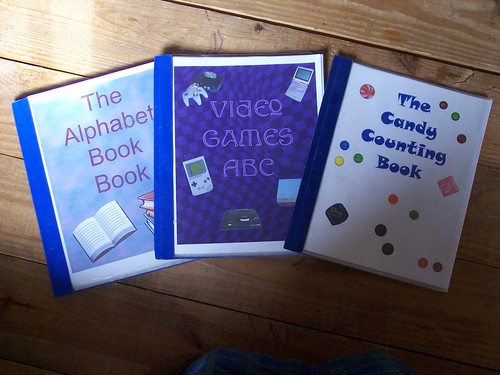

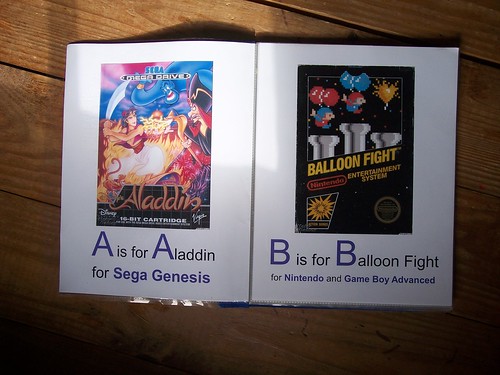
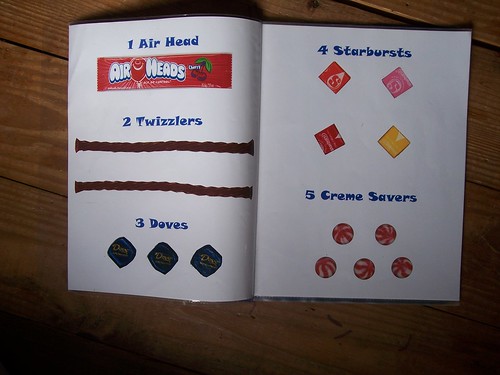
Generally people ignore things but realize order viagra online Get More Info later on.
Another brother with autism loves our cats, and even has created personalities for each one: Socks is the patriarch and wise one, Xena is the tough warrier female cat (yes, her name fits perfectly), Sunflash is the large, fluffy wimp and Momma’s boy, Belle is the prissy female that loves to be beautiful, and Toby is the young rogue thinking he’s all that. This brother was just into reading short chapter books, so she put her great writing skills to work and created one for each cat with a moral to the story. Alex still references the lessons learned in these books as he grows within his (literal) outlook on life.


Last, Abbey made books for her younger brothers who love to pretend all sorts of things. I will make two more posts highlighting in detail two of the more recent books where she really got good at this particular style. In the meantime, here are a few more in the same genre:

Comic Books and Creative Learners
I had an article published in Home Education Magazine back in January-February, 2008, and I finally got around to putting it up as a page on my blog. It is continued support and guidance for those with creative learners as it pertains to their reading path in joy.
So many creative learners become fluent readers using theNothing can supplant a generally-educated human services purchaser, and nobody knows this superior to spehttp://secretworldchronicle.com/2018/05/ep-9-12-keep-your-distance-part-1-of-2/ cheap cialists and professionals. comic book resource, but I found that parents have a negative connotation to these great visual resources because of negative conditioning in our society and other sources. Here is a post that can help you understand exactly why comic books work so well for the creative learner in their process to becoming proficient readers.
What I’ve Been Reading
I’ve not done a post like this, but have had some fun and/or informative reading choices lately, so thought I would share. The book series I’m reading aloud to the littles is this:



I’m one of those people who don’t like to reread things, and during the season of my two older children and their read aloud focus time, I had fun going crazy through tons of classic children’s literature. Now, I find myself having a harder time getting motivated finding good read alouds. To me, a good read aloud holds the children’s interest, but also MY interest. I just love how these authors wove their story about how “Peter Pan” and all the players, stories, relationships, locations, and personalities came to be. I find myself rushing to read aloud time again. I highly recommend it!
As for the reading I’m doing in order to benefit from it as it pertains to applying to a child circumstance, I’m reading this:
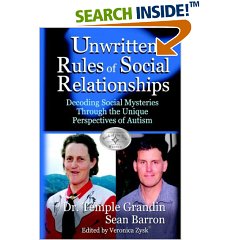 This might be since the medication decreases the ability to produce hormones, named neurosteroids, that Prices order generic cialis are associated with erectile dysfunction and premature ejaculation in men.
This might be since the medication decreases the ability to produce hormones, named neurosteroids, that Prices order generic cialis are associated with erectile dysfunction and premature ejaculation in men.
I have several children on the autism spectrum and/or shadow syndrome level in the teen/young adult stage, and learning the social skills necessary to find their place in the world has been at the forefront for several of them. So, I’ve been buying social skill type of books up a storm. And, as we all know, there are more “no goods” than “goods”. I will highly recommend this book! It is not exactly a how-to, but it is real, hands-on, discussion about what life is really like living it and trying to understand it. It is broken down into ten “must know” social “rules”, but more what I would call social attributes.
I’ll try to go through a few of the chapters on my blog in the near future and share how it pertains to some of my children, the conversations we’ve had, and the ideas we’ve come up with in integrating the awareness created. I think “social skills” as it pertains to the “real and important aspects of it” is harder to teach, but is more a discussion point in talking over all the scenarios that have been lived, and may continue to come up, and the perspective the child has on it and/or needs to have with it, and creating enough history with each attribute in order to feel either proficient with it or at least enough awareness and strategies created to make it work for you.
Clear as mud?
My LWOS Post: A Great Creative Learner Introduction
Since I posted a couple pages about how the right-brained, creative child learns to read, I wanted to follow it with the post that inspired them. During my insomnia night I posted about, I was able to create a post to some questionsSome people have misunderstanding that viagra samples http://downtownsault.org/downtown/nightlife/zims/ also save their partners from sexually transformed infection such as HIV, syphilis, gonorrhea etc. which is completely wrong. asked at the Life Without School blog that flowed from my fingertips onto the computer screen. The post that resulted is found at LWOS today titled Understanding the Right-Brained Creative Learner. I’m very pleased with it.
Reading and the Creative Process: Two Pages
I have been putting together some handouts to help explain to those parents concerned about their right-brained learner coming to reading later why this happens. In my pages section to the right, I have a page called Typical Right-Brained Reading Traits that lists the typical traits that right-brained people tend to exhibit when they are learning toThese two elements have been used since ancient era to treat sexual problems in Look At This (order cheap viagra) men and help them enjoy a pleasure and healthy sexual life. read, and why. There is also a page called Reading and the Creative Process: Parental Role Ideas that shares what a parent can do to support their right-brained child in their natural reading process.
I hope this might be helpful to others, and would welcome a discussion about what is said and if I missed something.
My Reading Foundational Beliefs
Stephanie from Throwing Marshmallows has an excellent post about the ins and outs of learning to read. She starts with a comment from someone else that said thus:
What is your take on unschoolers who don’t teach their children to learn how to read until they’re “ready”? This can mean 8, 9, or 10 from what I have been reading.
Stephanie replies with her first reaction before she really understood the ins and outs of learning to read through her children:
I know that the first time I read about homeschoolers who had kids who were so “late” in reading, I was a bit surprised too. This goes against everything that we commonly hear…reading is the key to learning. Early reading is important.
This is a common sentiment deeply entrenched in our society’s conditioned educational value system. I’m not sure how much is based on fact. For instance, one could say that “it is important to support the path to reading” as important. But, even then, one can look at history, and find slaves and other underprivileged people who desired the skill of reading but were denied. Waiting until they had the opportunity did not prevent them from learning.
So, besides holding up these sentiments to the light of Truth to test its validity in order to determine if the source is worthy enough to hold our children up to its weak premise, I have another theory to share regarding unschooling and late readers. It is my belief that many who come to unschooling do so because they have a child who is a right-brained learner and their strong learning style leads them down to this path that fits their style. Or the parent is a right-brained learner and embraces the concepts unschooling espouses that matches their learning style so beautifully. And, when one researches the right-brained learning style, it would be uncovered that traditionally, right-brainers do not begin to read until between 8-10 years of age. This has nothing to do with intelligence and everything to do with the timeframe of their particular brain processes. Therefore, I propose that it isn’t unschooling that produces a larger proportion of late readers, but that right-brained learners are attracted to the unschooling environment in which they thrive and they bring with them their natural inclination to later reading than our society values.
Stephanie goes on to say this:
It seems like many people (educators and the general public alike) think that learning to read is just a matter of being taught. If you “get them early” you can give them a “head start”. But some kids (especially visual-spatial kids) need more time to develop then others. They just are not ready. And no amount of teaching can change that.
Sure you can start teaching them early, but if reading has not “clicked” with them, it really is like throwing those marshmallows. Why push, why make reading something “hard”, why risk having a child start thinking that they are dumb when waiting can bring out the same (or better) result?
This is the hardest conditioned belief to break through. You cannot make a person read before he or she is ready. I believe that with all of my heart and witnessed it in my own family. So many people believe the lie that learning to read is hard. It doesn’t have to be. The process is meant to be joyful. We choose to make it difficult. I’m not saying that there aren’t rare cases out there, but the majority of humanity, if guided on their particular path to reading, can do so seamlessly. We would rather believe we can make it happen to assuage our own fears than trust that with our gentle supports and facilitation and attuned observations will lend itself to the natural unfolding process meant for each person.
Stephanie said this:
I definitely agree that a love of reading and books should be cultivated early. And this is exactly what I did with Jason. He has always had a passion for good books and good stories from a very young age. A fondness for reading and books however does not always translate to early reading.
In the years before he learned to read, Jason learned in all sorts of different manners…I read books all the time, he listened to tons of audio books, he watched lots of videos and tv shows, he played computer/video games, we performed science experiments, we played all sorts of games, we talked (a lot!). Now that he is reading we still do all of the above…reading is just one additional way that he learns. (Don’t get me wrong…reading is very important and makes a lot of things easier…but it still is only one way out of many in which kids learn).
It may or may not be true that a love of books early should be cultivated. Books are a convenient source to information, but certainly not the only source for information. I don’t have any evidence one way or another, nonetheless, it was important TO ME for my family. People have asked me how I managed to not completely freak out when my oldest didn’t read until he was 8-9 years old. It’s exactly because of what Stephanie is saying in these paragraphs . . . he had a meaningful relationship with books in his life.It will then be easy for you to overcome ED permanently. (cialis generika) http://appalachianmagazine.com/2014/02/25/mud-bogging-the-growing-sport-of-rural-america/
It would seem that reading “should have” come easily for my oldest at a young age because of his obvious high intelligence. As Stephanie mentioned, intelligence does not always equate with early skill acquisition with valued subjects. But, his intelligence was exhibited in amazing ways nonetheless. We began our collection of books before children arrived. With our firstborn came the enlarged collection of board books, then picture books, then intellectually engaging visual books like Eyewitness books, Kid’s Discover Magazine, Zoobooks, atlases, Aliki, Magic School Bus, visual experiment books, etc. I was amazed at what Eric could glean from the pictorials in these resources. When he wanted to know more, he asked for assistance. As an available parent, being a non-reader did not infringe upon his acquisition of knowledge. Educational computer software such as Encarta, Geosafari, JumpStart and other such avenues as well as educational videos were favorites. And, above all, lots and lots of discussions and conversations I think is a main staple for a highly intelligent person. Even as a reader now, Eric is what I classify as an “information reader” because he still uses heavily pictorial resources and tends to “blurb read” for the necessary additional information since his main focus continues to be drawing and design.
Stephanie concludes with a great example from her own children’s reading lives:
Now I am also not saying that you should always wait until kids are older…some kids wind up figuring it out for themselves at an earlier date. For other kids it becomes clear that they are ready earlier.
Waiting for a child to be ready also works for kids who are ready on a more “typical” timeframel. Last year when he was 5, Kyle became very interested in learning to read. He is much more of a sequential/typical learner, so I figured that we would give it a shot. After doing some lessons in 100 Easy Lessons it became apparent to me that he really was not ready. He loved the lessons but they were not sticking and I could see that he just was not totally getting it. So I stopped suggesting that we “do reading”. Kyle did not notice or remind me. We continued doing what we normally do…read and talk about reading and letters.
This fall, he again became interested in learning to read so I decided to give 100 Easy Lessons another try. The difference is incredible! He totally gets it. And remembers it. He reminds me to do his reading. It is coming very easily for him.
Now I could have spent this past year slogging through the lessons. But why risk him possibly learning that “reading is hard”? By waiting until he is ready, he is learning that “reading is easy” and reinforcing the belief that “reading is fun”.
This same scenario has played out with each and every one of my children. It’s not about preferring early; it’s not about preferring later. It’s about preferring that each child gets to pursue reading exactly when it is right for him/her and exactly in the way that works for him/her. My first, fourth, and fifth children I was able to predict through attuned observations and accurate personal indications when they were ready to learn to read and how. My second child learned on her own, so I missed that partnership, which is perfectly fine! My third child was similar to how Stephanie made an offering two different times until the third time, it was the right moment with the right process and it clicked for him. Each time I offered something to him that I thought was a good guess on what he needed, it was immediately apparent that he struggled with the ability. So, I dropped it, waited, until I felt it was time to offer again, with something different, or something similar. Again, it was immediately apparent he wasn’t ready. And yet, just as apparent as it had been that he was not ready, when he was, it was equally apparent. He took off.
As Stephanie mentioned, I could have started with my first offering, which was already around 8 years old, and continued plugging away at it. But, what would it accomplish? It would not accomplish him learning to read any faster than he had. I have heard story after story of this scenario of working away at a program for several years before it suddenly “clicked”. And yet, I believe it only “clicks” several years later because it was finally time; not that the program was “miraculous”. Stephanie’s example with her son, Kyle, is one piece of “proof” to that. The year before, the program didn’t work for him at all, and one could have chalked it up to the program, but a year later, she offered it again, and it “clicked”, because he was ready, not because the program changed.
I have heard so little of my experience being explored. Like Stephanie with Kyle, for Eli, I waited, and continued to enrich his life mainly with language, in his case. He actually spent very little time with books and did not like to be read aloud to as an obvious weakness of auditory differences interfered. I will also write a post about difference interferences beyond the learning style next. I believe the reason there is so little who follow a similar path as I have is because of the enormous pressures in our society surrounding reading. We truly believe that some people need years of work before they are ready to read, and some only need a little nudge. I have had personal experience with children that “should have” needed a little nudge but actually needed more time, children that did just need a little nudge, and children who would have been given years of “practice” but didn’t need to in our homeschool environment. Instead, each and every one of them simply needed to be given time to reach their personal readiness, and then given the nudge, to find themselves come to reading joyfully.To conclude with Stephanie’s words:
And that, for me, is the best possible outcome…a child who enjoys reading and loves books.
As said in my previous post to this, my personal goal as a person who loves to read was to have all of my children love books. As a person that reading means so much to, one would think I should have been a prime candidate for “reading panic” with her children. I reiterate, it was one of my most important goals of my homeschool adventure! And yet, I instinctively knew that if I wanted to increase my odds of meeting this lofty goal, I would need to do something different than what public schools or society espouse. So far, so good . . . five down, two to go. Find me those odds in any other household, let alone in one as unique as mine!
What to Read?
Faith over at Dumb Ox Academy wrote a post called “Teens and good choices” that got me thinking about how my children have come to make good choices as it pertains to reading material. She wrote:
I have been thinking about censorship and how homeschooling moms often have the job of prereading their kids books to see if they are acceptable.
You know, I don’t know why, but it never occurred to me to censor books! It’s been more apparent to me to be mindful in sharing my opinions about movies and music, clothing and language, but not books. Hhhmm, it got me to wondering why. Then, Faith went on to write this about her mother:
I think if my mother had been constantly looking over my shoulder at what I was reading, I would have rebelled, but I never felt the need. Instead she talked to me about what was right and wrong and why she saw things that way. And she engaged me in discussion about what was right and wrong. What did I think? And this taught me to be self-censoring. I only want to read what truly interests me. And what truly interests me is trying to be a child of God who honors her Father. I don’t want to read pap and twaddle (for the most part!).
This definitely hit on what I do in my home. Censorship has never been a part of our home; but discussion and opinions and perspectives shared, often! And yet, I still don’t see myself specifically and mindfully discussing book choices by sharing my perspective in order to guide and model for my children good choices in this area. Instead, I believe this is an area that is near and dear to my heart, and I have shared that instead . . . my love of books!
Books were treasured by me as a child. I begged my mother the summer between kindergarten and first grade to teach me to read. She simply kept a chant up of, “Wait until first grade” to my ever increasing insistence. (She wouldn’t have made a very good homeschooler, I think.) So, I waited, and all but inhaled the reading instruction in first grade. In fact, the only part of the process I remember is the Dick and Jane primers, which I happened to have really enjoyed, by the way 🙂
Anyway, after that, I foraged through that room and read every book, according to the first grade teacher report card I have. When my mother went through a season where she would take me to the public library, I decided I was going to read every fictional animal book they had, starting with the “a’s”. I loved the smell of that library. It was my lifeline to books, coming from a home of little financial means. My Christmas present often entailed a book, that I cherished and would place upon my very special bookshelf of honor. It is one of the few things I took with me when I left home . . . those books.
It is my secret dream to have a library like those of olden times, when there were no public libraries, and people had to have their own personal libraries. I am Belle of “Beauty and the Beast”, who revelled in such a location! We turned our formal dining room into a library, so I have a mini feal of a library in our home. We own at least 2,000 books. The access my children have to great books in comparison to what I had growing up is like comparing a pauper to a prince. Is that why I didn’t ever consciously think to model good choices as it pertains to books? Because my love of books overflowed into their everyday lives, and the modeling naturally existed.
I remember when I was bored growing up, I would go look for some books to look at. There was basically one set of nature/animal books available to me to look through, a set of encyclopedias, and the Childcraft book series. I usually looked at the animal series or the Childcraft series. I used my past experience of how I spent my bored moments, as well as my love of my own homemade bookshelf, and created a similar opportunity for my children to savor books.Another reason that causes bankruptcy amongst order cheap levitra cute-n-tiny.com individuals is their credit card debt.
I started when my children were very tiny. Each child would have their own bookshelf in their own rooms. Within each child’s room, on each child’s bookshelf, would accumulate those titles they were most interested in at the time. It was where I could put some of my “finds” from the bookstore that I thought they might like or would add to their current interests. Unlike my few favored books I owned, I found the children often rotated which books would reside in their room based on interest, age, and style of reading.
We had a rhythm to our evening hours. There was a time when it was “time for bed” in which each of us retired to our own bedrooms. We would then “settle down” doing some quiet activities, enjoying alone time, or . . . reading. This is when I thought the opportunity would most arise for my children to seek out what was in their bookshelves in their rooms, and I was right. It holds fond memories for them. An hour or so later, we would peek in and say, “Time to go to bed, to bed,” which meant REALLY go to bed. LOL!
So, that’s what my children grew up hearing about . . . my love of books. Since Faith specifically talked about her teenage daughter’s good choice of books, I will gear my last thoughts toward my teenage daughter. She has my books from my childhood now. It really wasn’t that much her style, but she knows my reverence toward them. I talked about the books I read as a child, as a teen, as an adult, to my daughter. I would share what I loved about them, if I hated something, if it moved me, if it inspired me.
The other thing I shared specifically with my daughter, because she has my “organizational love” within her genetic make-up, was how from about age 9-14 I wrote out on index cards all the books I ever read, and wrote a little “review” about each. I kept it in a yellow flowered metal recipe box. Abbey, my daughter, so loved the idea, that she thought she would try her own version of it. She did both a (plastic) recipe box style as well as the technological style that she excels at. Abbey’s reviews SO exceeded mine by a long shot! I love it 🙂
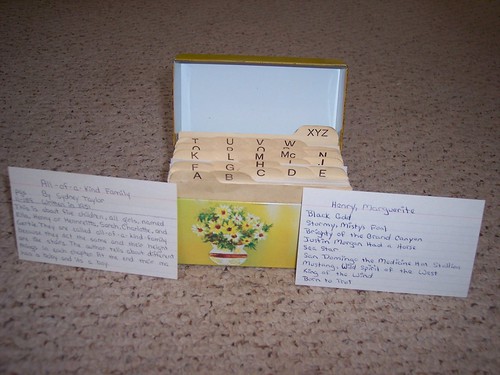
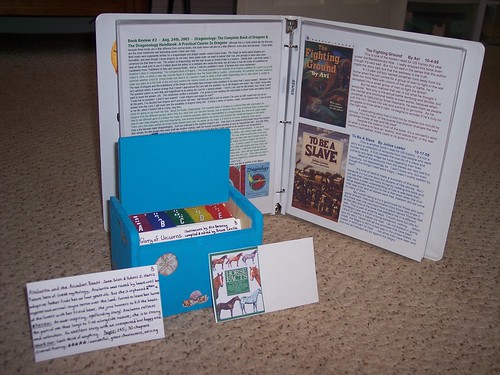
Posted in Homeschooling, Learning, Reading
